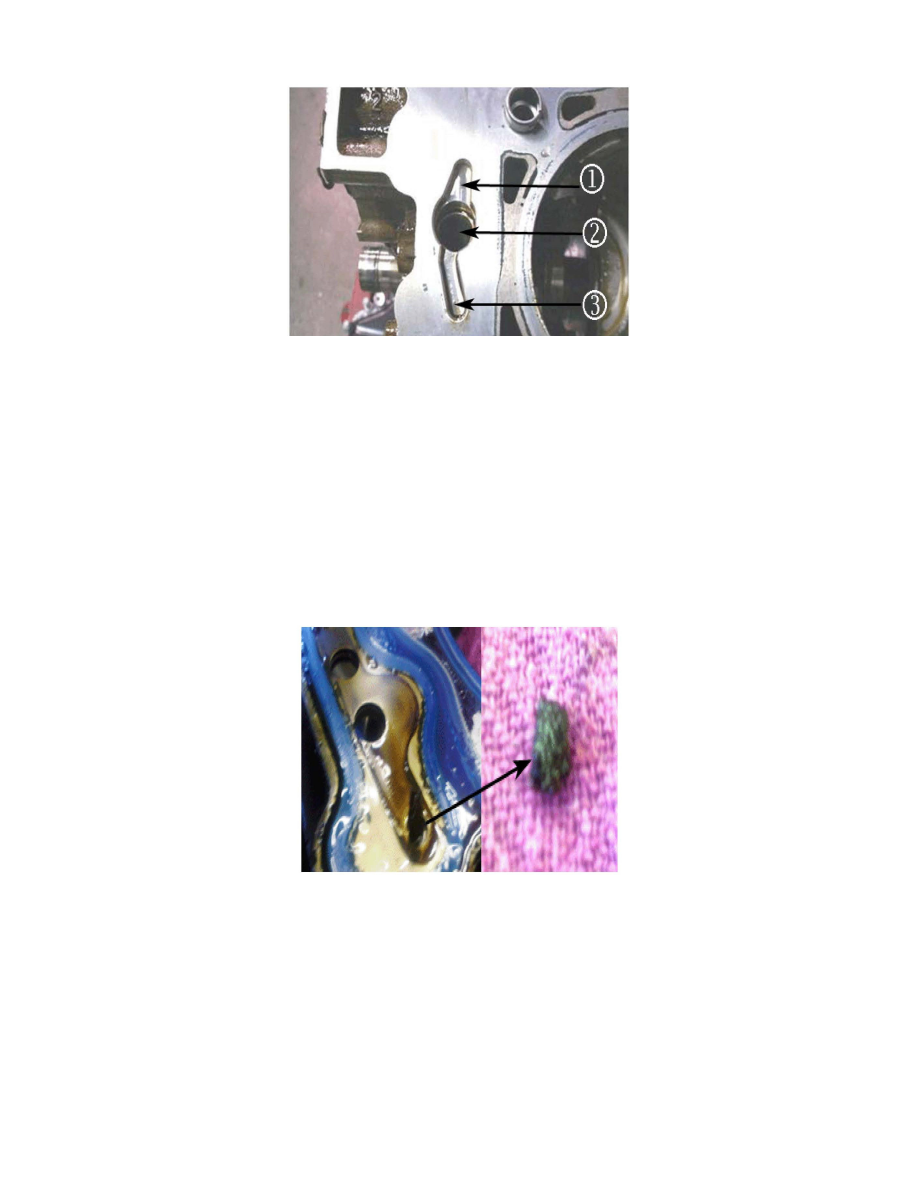XL-7 2WD V6-3.6L (2007)

Noises in the valve train that can be isolated to a specific bank and cylinder should be investigated for obstruction, blockage, and debris.
Oil is pumped up from the engine block to feed three galleys in the right cylinder head that align with the labeled areas shown:
1. Oil galley to the intake valve lifters
2. Oil galley to the camshaft actuator (phaser)
3. Oil galley to the exhaust valve lifters
Oil is pumped up from the engine block to feed three galleys in the left cylinder head that align with the labeled areas shown:
1. Oil galley to the intake valve lifters
2. Oil galley to the camshaft actuator (phaser)
3. Oil galley to the exhaust valve lifters
Pictured to the right is a portion of filter material that was removed from the oil galley feeding the exhaust lifters in the cylinder head. The debris cause
the oil to aerate, preventing the lifters from effectively "pumping up", resulting in a ticking or clattering noise.
If during the troubleshooting process, symptom diagnosis, testing procedure, or whenever prompted by the service manual, there is a need to check the
engine oil pressure, please refer to the following instructions to properly check engine oil pressure.
To assist in the inspection of the lubrication system of the XL7 (JC636), Suzuki is making available new special service tools, to conveniently obtain oil
pressure readings.
OIL PRESSURE INSPECTION
1. With the vehicle on a level surface, run the vehicle for a few minutes, allow adequate drain down time, 2-3 minutes, and measure the oil level.
2. If required, add the recommended grade engine oil and fill the crankcase until the oil level measures full on the oil level indicator.
